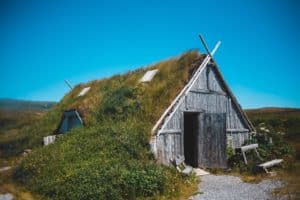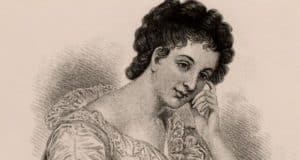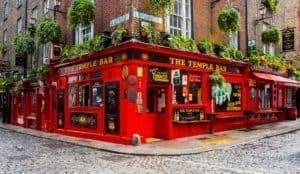A Guide to the World’s Living History Museums

Updated On: March 11, 2024 by Eman Sameh
Living history museums offer more than a glimpse into the past; they provide a doorway through which we can step into the bygone lives of our ancestors. These unique institutions go beyond static exhibits to offer interactive and immersive experiences. Visitors can explore heritage in a tangible way, engaging with interpreters who recreate historical periods with an authenticity that books and traditional museums often cannot convey. The visceral education received here deepens our understanding of how our predecessors lived, worked, and shaped the world we know today.

Visit a living history museum to witness firsthand the restoration and preservation of historical artefacts. Specialised events highlight different historical eras, themed areas, and even the mundane aspects of everyday life in the past. Seasonal celebrations and role-playing activities further enrich the visitor experience, offering an educational yet entertaining journey through time. These museums play a crucial role in maintaining the cultural fabric that connects us to the narratives of history.
The Role of Living History Museums

Living history museums offer immersive peeks into the past, where heritage is brought to life and education extends beyond the traditional boundaries of a classroom.
Educational Perspectives
In our mission to explore and elucidate the world’s cultural heritage, we recognise that living history museums serve as vibrant educational platforms. By allowing visitors to experience history, these museums foster a unique learning environment. Historians and educators collaborate to curate interactive scenarios where one can witness the hustle and bustle of a Victorian street or the tension of a Revolutionary War encampment. These time travel experiences are instrumental in providing tangible context to historical events and societal norms of bygone eras.
Cultural Significance
Our heritage is a tapestry of diversified tales, and in our pursuit to convey its depth, we must acknowledge the pivotal role of living history museums. They are custodians of the past, safeguarding traditions and ways of life for future generations. As institutions of cultural significance, they stir public interest and understanding of historical identities. The representation of different social groups and narratives within these spaces is crucial for an inclusive perspective on history, as they are mirrors reflecting not only where we have been but also shaping who we are.
Iconic Living History Museums Around the World
Our journey through time isn’t confined to dusty books or silent artefacts behind glass – living history museums allow us to step into the past in the most interactive way. With a focus on authenticity and engagement, these museums preserve and bring to life the customs, buildings, and the very essence of historic sites.
Stuhr Museum of the Prairie Pioneer
The Stuhr Museum of the Prairie Pioneer offers a dynamic portal to the pioneer era. Here, we find a recreation of an 1890s railroad town, which gives us not just a glimpse but a full immersive experience of early prairie life. The museum’s dedication to historical accuracy is evident in every one of its carefully reconstructed buildings and its interpretive presentations.
Living History Farms
At Living History Farms in Iowa, we’re invited to explore over 300 years of agricultural history. This unique museum tells the story of farming in the United States, illustrating changes in agricultural methods through demonstrations and interactive activities. The museums interpret the work of the land as past generations did, using authentic practices and horse-drawn implements.
We can witness the colonial era throughout these living museums, particularly at Colonial Williamsburg, where we’re transported into America’s largest outdoor living history museum. This restored 18th-century city breathes life into America’s colonial period with its historic buildings, period costumes, and engaging interpreters. Visitors can engage with the complex tapestry of cultures and social elements of the time in a setting that meticulously recreates the physical landscape of our forebears.
Historical Eras and Themed Areas

Living history museums offer immersive experiences in different periods, allowing visitors to explore the textures and tones of the past. Each era, from the Colonial Period to the Victorian Era, is revived in meticulous detail, providing a chance to witness the past in the present.
The Colonial Period
The Colonial Period encapsulates the days leading up to the American Revolution, bringing to life the growing tensions and daily experiences of a people on the brink of shaping a new nation. At locations like Colonial Williamsburg, visitors can stroll through historically furnished buildings and interact with costumed interpreters, making tangible the minutiae of life in Britain’s largest New World outpost.
The Victorian Era
Transitioning into the Victorian Era, we find a time characterised by industrial progress, grandiose aesthetics, and a complex social hierarchy. Museums and heritage sites representing this period often focus on the dramatic changes in technology, fashion, and domestic life that defined Queen Victoria’s reign, reflecting both the prosperity and the challenges of the age.
Experiencing Everyday Life in the Past
We might marvel at how our ancestors went about their daily lives. Through living history museums, we’re offered a unique window into the past, allowing us to observe and even participate in the everyday life of bygone times.
Agricultural Practices
In these dynamic settings, we observe closely the agricultural practices that shaped societies. At these locations, farms are not static exhibits; they are pulsating with life as historical interpreters dressed in period attire and performing tasks ranging from tending to animals to demonstrating century-old farming techniques. Visitors often have the opportunity to engage in hands-on activities, helping to sow seeds or harvest crops, which forges a deeper connection with the agricultural past.
Domestic Environments
Venturing into domestic environments, we immerse ourselves in the intimate spaces where people of the past cooked, slept, and socialised. Homes within living history museums are typically furnished to match the era they represent, complete with the tools, utensils, and décor one would expect. Role-playing interpreters invite us into their world, offering narratives that transform these structures from mere buildings into vivid representations of everyday life. Through engaging with these domestic settings, we gain insight into the nuances of daily routines, family dynamics, and home management from different periods.
Interactive and Immersive Activities

We understand the incredible capacity of living history museums to engage visitors in unique, active participation. Through interactive and immersive activities, we’re transported to different eras that are close enough to touch the essence of history.
Craft Demonstrations
At the heart of these demonstrations, master craftsmen such as blacksmiths showcase their skills, offering a tangible connection to historic trades. Visitors can see, and sometimes even participate in, the creation of period-specific crafts. The ring of the blacksmith’s hammer and the heat of the forge pull us into a world where every item is handcrafted with a skill honed through generations.
Historical Reenactments
Historical reenactments breathe life into the static pages of history books. Our historians and reenactors combine meticulous research with compelling storytelling to recreate pivotal moments from the past. Witness soldiers in full regalia reenacting battles or join reenactments of daily life, where every detail adheres to the customs and styles of the time. These immersive experiences expand our understanding, allowing us to witness history as active participants.
Seasonal and Special Events

As we explore various living history museums worldwide, the seasonal and special events they offer provide a unique glimpse into the past. These events range from traditional holiday celebrations to commemorations of historical anniversaries, all designed to educate and entertain.
Holiday Celebrations
Throughout the winter period, living history museums often host festive events that showcase how holidays were celebrated in different eras. For example, visitors can experience how Iowans celebrated Christmas in the 19th century at the Living History Farms, complete with period decorations and activities. These events not only provide entertainment but also serve as educational field trips, where individuals can learn about historical holiday customs.
Historical Anniversaries
To commemorate significant historical dates, museums often hold special events on anniversaries of battles, signings of important documents, or other notable historical occurrences. For instance, the Gettysburg National Military Park may host reenactments and living history demonstrations to mark the anniversary of the Gettysburg Civil War battle, offering a powerful field trip experience that brings the gravity of history to the present. These events not only educate but also introduce an element of reflection on the past and its impact on our contemporary world.
Understanding Historical Contexts

When we visit living history museums, we immerse ourselves in the eras they represent. These museums allow us to encounter history, presenting a tangible experience where objects, locations, and performances bring the past to life.
Historians play a pivotal role in these museums, ensuring that the representation of the past is as accurate as possible. They employ various sources, including documents and artefacts, to recreate settings that reflect historical realities. This meticulous recreation helps us grasp the significance of the times and the lives of those who lived then.
In living history museums, significant themes such as immigration and the fur trade become more than textbook concepts—they transform into real-life narratives. We’re given a snapshot into the hardships and triumphs of migrants who shaped new societies, and our understanding of the commercial networks that defined the fur trade era deepens as we witness reenactments of bartering and negotiation.
Key Aspects of Historical Contexts at Living History Museums:
- Immigration: Realistic portrayals of immigrant life and cultural assimilation.
- Fur Trade: Live demonstrations illustrating the trade’s impact on economies and societies.
- Historians: Their rigorous research underpins the authenticity of each exhibit.
These museums serve not only as repositories of the past but also as forums for trade and cultural exchange, reflecting a time when goods, ideas, and people were constantly in motion. By participating in living history museums, we embrace a form of education that is both engaging and instructive, ensuring a richer understanding of the historical contexts crucial to our shared heritage.
Preservation and Restoration of Historical Artifacts

Adopting meticulous methods is crucial to preserving historic buildings. Efforts are made to maintain the authenticity of original materials, which often involves complex processes to reverse the effects of ageing and environmental damage.
- Documentation: Before any intervention, we comprehensively document artefacts and structures, ensuring future generations understand the original state.
- Cleaning: Careful cleaning avoids harming the original substance of artefacts, and in buildings, we may use gentle techniques to preserve fragile materials.
- Stabilisation: Using noninvasive approaches, we stabilise the current condition of historical objects to prevent further degradation.
- Repair: When necessary, repairs are made to blend seamlessly with the original fabric, prioritising the use of traditional materials and methods.
Historic and antique buildings require tailored restoration strategies to reinforce their structure while preserving their patina of age. This delicate balance involves introducing modern support systems while honouring the craftsmanship of bygone eras.
| Material | Consideration | Intervention Type |
|---|---|---|
| Stone | Erosion, Pollution Damage | Cleaning, Re-carving, Sealing |
| Wood | Rot, Insect Damage | Consolidation, Replacement |
| Metal | Corrosion, Fatigue | Stabilisation, Protective Coatings |
| Paint | Fading, Flaking | Consolidation, In-painting |
We understand that these architectural treasures embody the essence of previous centuries—and are irreplaceable conduits to our past. Thus, our commitment revolves around sensitive restoration, ensuring that the edifices that have stood the test of time continue to tell their stories. By honouring historic buildings, we preserve history for future appreciation and study.
The Significance of Role-Playing in Historical Interpretation
Role-playing in living history museums is a dynamic method of historical storytelling that goes beyond static exhibits. By engaging costumed historians, visitors experience a blend of theatre and pedagogy, creating memorable educational encounters. In this immersive form of interpretation, the past is performed by knowledgeable individuals who adopt the personas of historical figures or everyday citizens from distinct time periods.
- Engagement: Costumed interpreters play a vital role in enacting the daily life of the past.
- Education: Interpreters educate visitors through structured role-play, demonstrations, and interactions.
Historical Buildings serve not only as backdrops but also play a central role in creating immersive environments that enhance role-playing. Genuine or reconstructed, these structures provide a tangible context for the stories and lives of the people from the past.
- Authenticity: Structures lend credibility and depth, allowing visitors to step into the life of another era.
- Context: Buildings anchor the historical narrative in a physical reality.
Role-playing extends beyond a single performance, developing over time with visitor interactions. It is a dynamic tool that facilitates a deeper connection between the present and the past.
- Interactivity: Visitors engage directly with the past, leading to a more profound understanding and interest.
- Personalisation: Every visit can offer a unique experience based on visitor participation.
By embodying the persona of a citizen of history, interpreters bridge the gap between eras. This helps demystify history, turning dates and facts into relatable, human stories.
- Relatability: Personal stories of historical citizens resonate more effectively with visitors.
- Empathy: Role-playing fosters a sense of shared human experience across the ages.
In summary, role-playing as a tool in living history museums is significant due to its ability to create interactive, educational encounters rooted in authenticity and relatability.
Planning Your Visit to a Living History Museum

When we decide to step back in time at a living history museum, proper planning enhances the educational and entertaining experience. Our journey into the past can be both immersive and enlightening, provided we take care of a few details in advance.
Tickets: Purchasing our tickets ahead of time is essential, as it can save us from long queues and occasionally, we’ll find online discounts. Many museums offer combinations with local attractions, thereby providing us with a more comprehensive experience.
Weather and Attire: We must check the weather forecast before our visit. Since we will likely spend a significant part of our day outdoors, dressing appropriately for the weather conditions is key to our comfort.
| Season | Suggested Attire |
|---|---|
| Spring/Autumn | Layers with a light jacket |
| Summer | Sun hat and light clothing |
| Winter | Warm coat and gloves |
Activities and Demonstrations: Once there, we’ll find a variety of historic trades and activities to engage with. We should plan to arrive early to make the most of these experiences and attend special presentations that are only offered at specific times.
Educational Opportunities: Living history museums provide a unique educational platform. We can enhance our learning by engaging with interpreters and asking questions. Many museums also offer educational programmes for children and adults alike.
To sum it up, preparation is paramount. By looking after tickets and attire and mapping out our day, we ensure our visit is as enriching as it is enjoyable.
Frequently Asked Questions
We’ve compiled frequently asked questions to enhance your knowledge about the world’s living history museums and their unique role in preserving the past.
Which are the largest living history museums in the United States?
The United States boasts several expansive living history museums. Colonial Williamsburg in Virginia stretches over 300 acres and provides a comprehensive view of American colonial life. Another significant institution is Plimoth Plantation in Massachusetts, which spans historical landscapes, including a 1624 English Village and a Wampanoag Homesite.
Could you explain the concept of a living history museum?
A living history museum is a type of museum where history is brought to life. These museums recreate historical settings, often complete with actors in period attire, to provide an immersive experience. Visitors can engage directly with the interpreters and observe live demonstrations of traditional skills, making history feel more tangible and engaging.
What is the oldest living history museum in the United States?
The oldest living history museum in the United States is Plimoth Plantation, which was founded in 1947 on the historic Plymouth, Massachusetts grounds. It realistically depicts the lives of the English colonists and the Native Wampanoag people.
What are some prominent living history museums offering time travel experiences in California?
In California, living history museums like Old Town San Diego State Historic Park and the El Presidio de Santa Barbara State Historic Park transport visitors back to the Spanish and Mexican eras. These museums provide a sensory glimpse into the lives of the area’s early inhabitants through reconstructed buildings and live interpretations.
What was the first public museum to open in the world?
The first public museum to open in the world is the Ashmolean Museum in Oxford, England, which welcomed visitors in 1683. It set a precedent for public access to collections of art and artefacts, paving the way for the museums we know today.
How do living history museums differ from traditional museums?
Living history museums differ from traditional museums primarily through their interactive and experiential approach. Instead of simply observing artefacts, visitors to living history museums can interact with costumed interpreters and witness live demonstrations, offering a dynamic way to learn about the past.






